Our Services – For Your Oral Health
Tallinna Hambakliinik (Tallinn Dental Clinic) offers a wide range of professional dental services, covering all oral care and treatment needs. Our experienced specialists use modern technology and a personalised approach to provide the best possible care for every patient.
Be it a routine dental check-up, complex root canal treatment with a microscope, or a beautiful smile achieved through aesthetic dentistry – we offer a comprehensive solution. Our goal is to help you maintain healthy and strong teeth for life.
Explore our range of services below to find exactly what you need, or contact us for any additional questions. We look forward to welcoming you at Tallinna Hambakliinik, where your smile is always our priority!
Tallinna Hambakliinik Services:
Dental Treatment
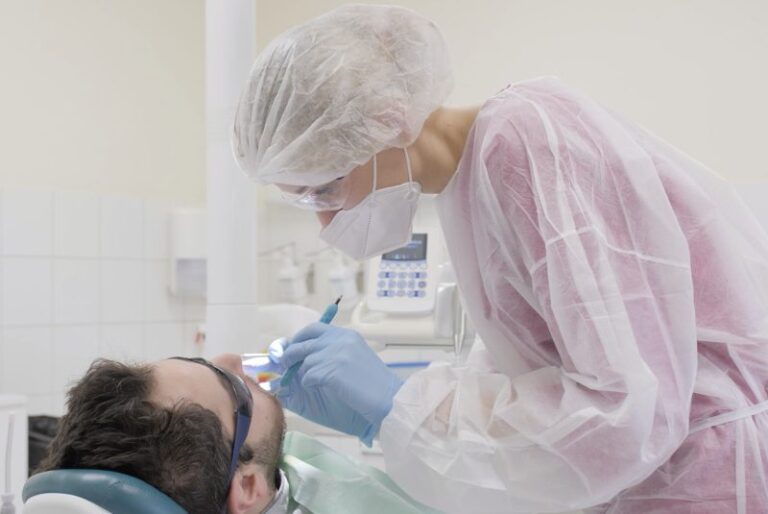
Our wide range of dental services includes:
preventive procedures for dental diseases
tooth restoration using various filling materials
replacement of old fillings
root canal treatment
tartar removal
treatment of gum diseases
teeth cleaning using both conventional methods and the Air-Flow system (including “pearl wash”)
During the patient’s first appointment, we examine the condition of the mouth and teeth and give the patient an overview. Additionally, we take a panoramic X-ray image. If dental treatment is necessary, we prepare a personalised treatment plan and discuss its estimated cost. Once the treatment plan is agreed upon with the patient, we proceed with the necessary procedures.
Proper oral hygiene and regular prophylactic examinations help significantly reduce large expenses on dental care. As the price of dental care depends on the specific problems of the patient, the exact cost of the service can be determined only after the oral examination.
Untreated dental conditions can contribute to serious health problems.
Children’s Dental Care
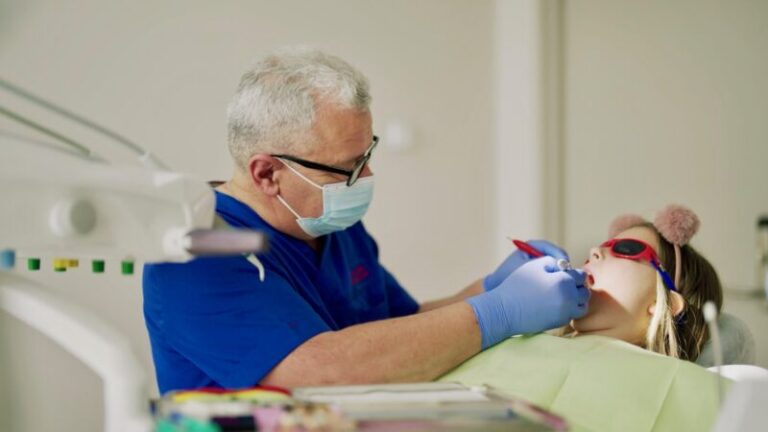
A child’s first visit to the dentist should take place after the first teeth have erupted. It's crucial to visit the dentist before dental and gum problems arise, so that the dental check-up is not unpleasant for the child.
At the first appointment, we perform an examination of the child’s oral cavity, during which we instruct the parent on how to clean the child's teeth and what to pay attention to.
Teeth should be checked every six months because dental decay develops rapidly in children and may not be initially noticeable to parents, while actually, a deep cavity could have formed.
The Health Insurance Fund pays for dental care (including some prostheses) for patients under the age of 19. The appointment fee is 5 euros.
Read more:
Root Canal Treatment with a Microscope
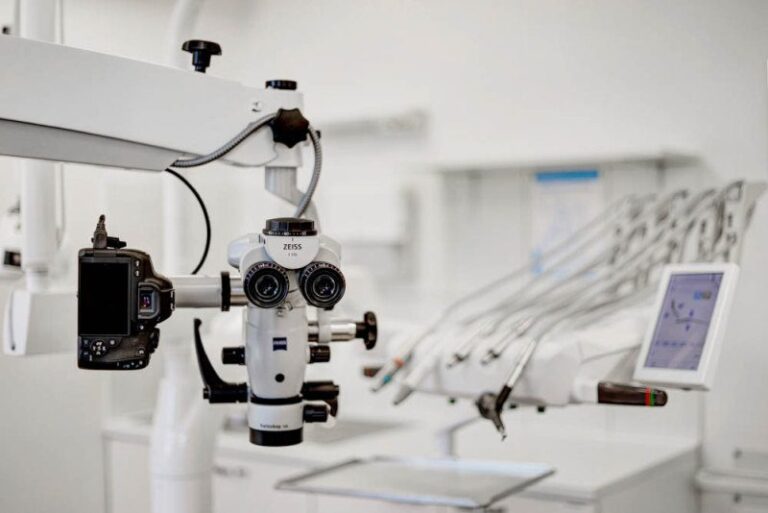
Root Canal Treatment with a Microscope – A Modern Solution for Ensuring Quality
In modern dentistry, the microscope is an invaluable tool, helping with diagnostics and precise treatment. In our clinic, we use the microscope extensively for root canal treatment, cavity removal, surgical procedures, and prosthetics. This precise instrument allows us to spot even the tiniest details that are invisible to the naked eye.
Why is a Microscope Important in Root Canal Treatment?
Root canal treatment, especially for molars with multiple roots, can be a complicated and time-consuming procedure. The microscope magnifies the treatment area up to 36 times and directs a powerful light onto it, enabling the dentist to see and work with even the smallest structures, including narrow accessory canals. This precision contributes to higher treatment quality and reduces the risk of complications.
Advantages of Using a Microscope in Root Canal Treatment
- Greater precision:a microscope helps identify even the smallest accessory canals and detect problems that could otherwise be missed.
- Better visibility:powerful lighting enables the dentist to work more confidently in complex and narrow areas.
- Root Canal Retreatment:with a microscope, old fillings can be removed and dentists can perform complicated root canal treatment in cases where previous treatments performed without magnification failed.
Procedure Cost and Duration
Microscope-assisted root canal treatment is more expensive due to the need for specialized equipment and the dentist’s additional skills, but the precision and chances of success are significantly higher. Root canal treatment is often performed over multiple visits, so payments are spread out over these appointments.
Can a Tooth Hurt After Root Canal Treatment?
Since microscope-assisted treatment is more precise, the risk of complications is lower. However, pain after the procedure may still occur, which is a natural part of the healing process.
Does a Microscope-Assisted Root Canal Treatment Completely Eliminate the Infection?
While the microscope significantly increases the accuracy and quality of treatment, like any procedure, it cannot guarantee a 100% success rate. Proper diagnosis and precise treatment greatly increase the likelihood of success.
Oral Surgery

We Provide a Variety of Surgical Services:
Tooth or Root Extraction
extraction of wisdom teeth
cyst removal
extraction of new formations
management of dental traumas
Lip (labial Frenulum) and Tongue-Tie (lingual Frenulum) Correction
Surgical Gum Treatment
Abscess Incision
Placement of Implants (Including Mini Implants)
Preparations for Prosthetics and Orthodontic Treatment
In oral surgery, we use both traditional methods and laser technology. All surgical procedures in the oral cavity are performed under local anesthesia using highly effective anesthetics.
Every surgical procedure begins with prior diagnostics and treatment planning. In case of a scheduled appointments (not first aid), the first appointment includes a consultation and less time-intensive treatments. For more complex procedures, such as wisdom tooth extractions, a separate appointment is scheduled in agreement with the patient.
Prosthetics
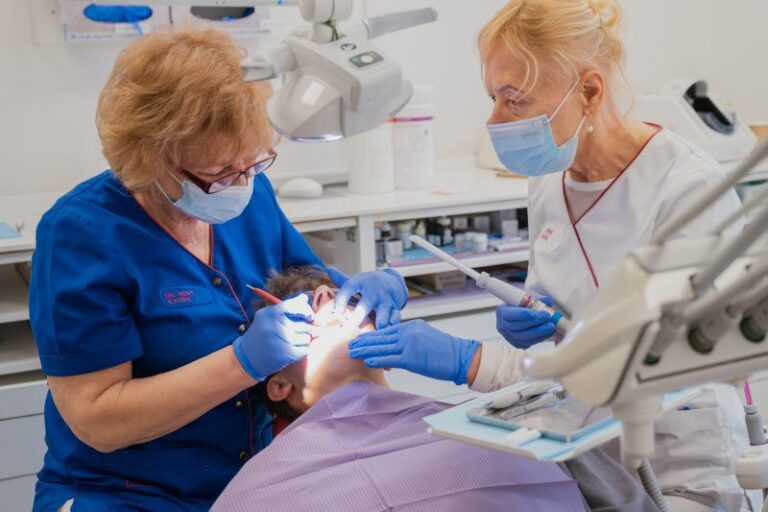
Aligners and Mouthguards
Our dental laboratory makes individual aligners and mouth guards for various indications and purposes.
- Sports Mouthguard
- Bruxism Guard
- Whitening Tray
A custom-made aligner can be ordered from a dentist specializing in prosthetics or orthodontic treatment.
Aligners are made of acrylic-based thermo-pressed material by vacuum pressing for either the upper, lower or both dental arches. The thickness of the aligner depends on the type of work to be ordered, varying between 0.6 and 4 mm. The materials used are of high quality and patient-friendly.
Intraoral Device for Sleep Apnea Treatment
In our clinic, patients can order an intraoral device for the treatment of snoring or sleep apnea. Prior to this, a sleep study and consultation with a specialist are required
There are various options for replacing missing teeth. Depending on the patient’s medical indication and the condition of the oral cavity, we can make either removable or fixed dentures.
Removable dentures
Complete dentures -with this type of dentures, all the patient’s teeth are replaced in both the upper and lower jaw, or in one of the jaws. Dentures are made of acrylic and attached to the roof of the mouth and the alveolar ridge. In the case of a completely edentulous jaw, attaching dentures is difficult. It is especially difficult to attach dentures in the lower jaw because the lower jaw is often narrow and low. The tongue and cheek muscles that attach to the lower jaw lift the lower denture off the alveolar ridge. You have to practice holding the dentures in your mouth! In order for the dentures to stay in the mouth better, they can also be attached with implants or mini-implants.
Partial dentures – with this type of dentures, some missing teeth are replaced. Partial dentures are made either entirely from plastic or on a metal cast framework (clasp or frame dentures). They are made either only of acrylic or on a cast metal framework (cast bugel dentures). Because the use of a metal framework allows the dentures to be made with smaller dimensions, there is more free space in the mouth and wearing dentures is more comfortable. The advantage of metal-cast bugel dentures is also their better durability, aesthetics and functionality, but this type of dentures cannot be made for every mouth due to the displacement of one’s teeth or the unsuitable shape of the jawbone. Furthermore, repairing these dentures can be complex and may not always be possible.
Fixed dentures
For the restoration of extensively damaged or missing individual teeth, the best option is fixed dental prosthetics: crowns, bridges, inlays, and veneers.
The result is an aesthetically pleasing, biologically compatible, and durable dental crown or bridge.
Combined dentures
This type of prosthesis combines a fixed dental prosthesis and a removable denture.
Partial and full dentures attached to root anchors and implants – ensuring better stability in the mouth.
A partial denture attached to dental crowns with a special locking system.
When ordering the service, a 50% prepayment for the dentures is required. The remaining amount is paid upon completion of the work.
The fabrication of dentures is a time-consuming and meticulous process that requires excellent cooperation between the patient, dentist, and dental technician. The patient's active participation and feedback during fittings ensure a well-fitting denture and long-term comfort in use.
Our dental laboratory also offers patients a denture cleaning service.
Gum Treatment (Periodontology)

Gum Treatment (Periodontology) is a branch of dentistry that focuses on the treatment of gums and the supporting structures of the teeth. The complex of tissues surrounding and supporting the teeth (periodontium) includes soft tissues (such as gums) and bone tissues.
Good oral hygiene and regular visits to the dentist help prevent gum diseases and avoid their destructive effects.
If periodontal treatment is not done in time, gum diseases can lead to tooth loss. In addition, inflammation in the supporting structures of the teeth increases the risk of diabetes and cardiovascular diseases.
Why Do Gum Diseases Develop?
Gum diseases are very common and affect most people at some point in their lives. Generally, they occur due to inadequate oral hygiene when dental plaque accumulates and tartar (mineralized and hardened plaque) forms. Aggressive bacteria multiply on the gum line, releasing toxins. The gums respond to this with an inflammatory process.
Gum diseases have two main forms – gingivitis (milder and reversible) and periodontitis (more severe, causing irreversible damage).
In the milder form of the disease, gingivitis or gum inflammation, the gums appear red, swollen, and bleed easily. Patients may experience mild discomfort or have no complaints at all. The most common cause of gingivitis is inadequate oral hygiene. With professional treatment and proper ongoing care, gingivitis can be completely cured.
If gingivitis is left untreated, it can progress over time into a more serious condition known as periodontitis. Long-term and chronic inflammation spreads from the gums to involve the supporting structures of the teeth. The gum gradually pulls away from the tooth, forming a gum pocket where plaque can accumulate beneath the gum line. Persistent damage can occur due to inflammation, such as gum recession and bone loss. Ultimately, this leads to loosening and eventual loss of teeth.
Symptoms of Periodontitis, Including Inflammation of the Supporting Tissues and Bone:
Bleeding gums (during brushing)
Swollen, inflamed gums
Gum recession
Tooth sensitivity
Persistent bad breath despite brushing and flossing
Gum Irritation
Gaps Forming Between Teeth (Tooth Mobility)
Gum bleeding after brushing, flossing, or eating
Gum swelling and/or redness
Gum pain and/or sensitivity
Bad Breath
Gum overgrowth and ulcers (less common)
During an appointment, a periodontist examines the patient's gums and notes symptoms such as bleeding, swelling, gum pockets, and pus discharge on the patient's dental record. The periodontist then assesses the treatment needed, explains possible next steps thoroughly, and provides an overview of the treatment costs. Additionally, the periodontist educates the patient on oral care practices. Based on the consultation, the periodontist develops an individualized treatment plan.
Aesthetic Dentistry
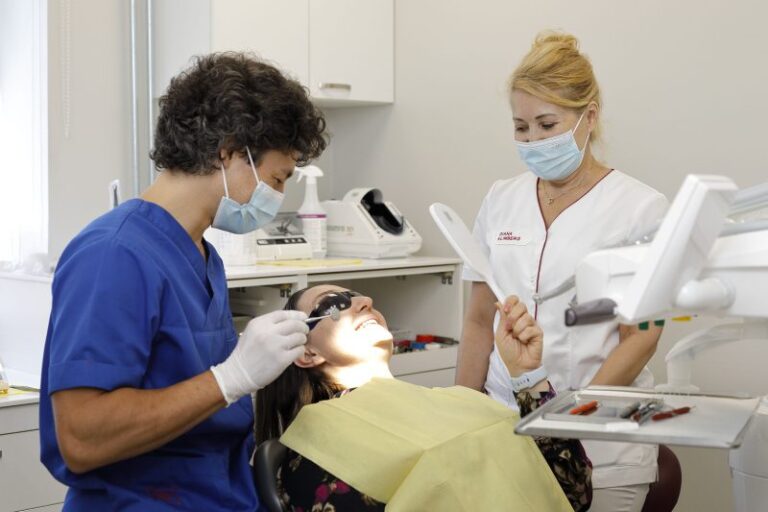
Aesthetic dentistry includes procedures aimed at enhancing the beauty of your smile and improving your self-confidence:
- Teeth whitening
- Replacement of dental fillings
- Application of dental jewellery
- Alignment of teeth
- Prosthetics
- Placement of veneers
Teeth whitening
Teeth whitening can give you a brighter smile.
We offer various options for teeth whitening:
Whitening with the Biolase system – allows achieving a considerable result with just one procedure
Whitening of individual teeth
Intradental whitening
Whitening kits for home use
The most suitable whitening method can be chosen after the teeth have been examined and thoroughly cleaned by a specialist. Whitening requires healthy teeth. It is important to know that only dental tissue is subject to whitening, while existing tooth fillings do not become brighter. Therefore, it is necessary to take into account the possibility that the existing fillings will have to be redone after whitening.
Whitening is not possible for front teeth with large fillings, broken fillings and untreated teeth.
Before whitening teeth, tartar and plaque must be removed. For this, we recommend cleaning the teeth with the Air-Flow device, which can effectively remove both tartar and pigment spots.
The result of whitening depends on the structure of the teeth, and not every patient’s teeth whiten to the same extent. The preservation of the whitening effect depends on the characteristics of the person’s teeth and eating habits. Anything that causes the need for whitening also causes the whitening result to disappear. For example, frequent consumption of coffee, tea and red wine and smoking will cause teeth discolouration over time. The result usually lasts for about a few years. In some cases, we recommend using other methods of cosmetic dentistry, such as laminates, instead of teeth whitening.
Laminates
Laminates are thin coverings placed on the front surface of the tooth to hide large fillings or discolouration. Laminates are made in a dental laboratory from ceramics.
To place the laminate, the front surface of the tooth must be ground down to make room for the laminate.
Dental jewellery
Once teeth are corrected, they can be given the final touch with a dental jewellery, which can be ordered by request. Jewellery is easy to install and does not damage the surface of the tooth.
An appointment with a dentist must be booked to install dental jewellery.
Implantology
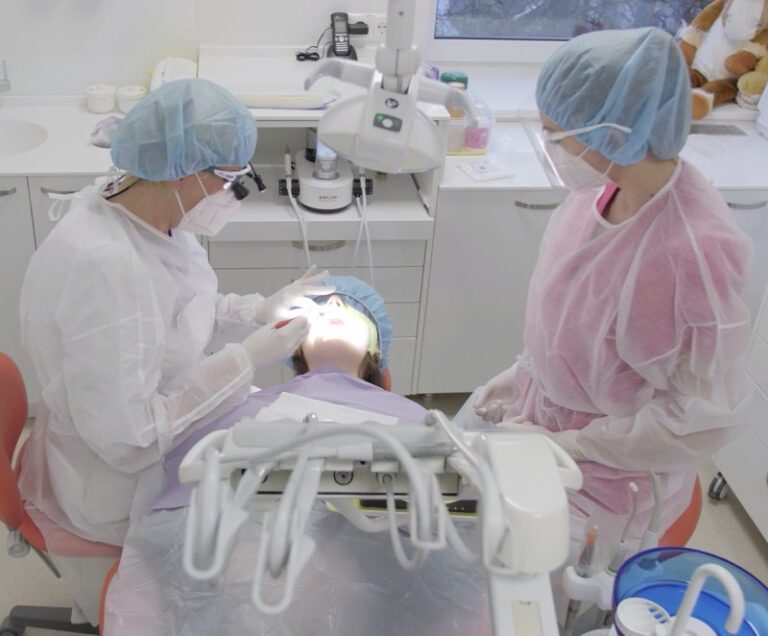
Implants are the best solution for replacing missing teeth. An implant is a high-tech artificial tooth root made of titanium, which can be used to replace one to several missing teeth.
A dental implant is placed in the jawbone during a minimally invasive surgical procedure using local anaesthesia. In some cases, if the patient wants an implant to replace a tooth that needs to be removed and there is no inflammation under the root of the tooth, it is possible to install the implant immediately after the tooth is extracted. After installing the implant, it takes three to six months for the implant to ossify.
A new dental crown or any other structure needed to restore chewing function or aesthetic appearance can be installed on an implant that is already fixed in the jawbone. In addition, implants can be used to better fix complete dentures in the mouth. While the presence of at least partially preserved healthy dental tissue is necessary for other types of dentures, it is not necessary for installing an implant.
If the volume of the patient’s own bone does not allow for the installation of the implant, additional bone tissue can be built. For this purpose, either the patient’s own bone tissue or artificial bone is used. In such a case, the waiting period from the installation of the implant to its attachment in the jawbone is longer – up to six months.
There is no reason to fear that the body does not accept the implant. The success of implant installation and subsequent stability in the mouth depends a lot on the person’s own health condition, oral hygiene and habits. According to various data, implants can remain in the mouth for ten years in 98 percent of cases. Implants can last a lifetime with careful and consistent oral care and regular dental check-ups.
In our clinic, many trained dentists install implants with whom appointments are made by the customer service. During the first appointment, the patient’s questions are answered, the necessary examinations are performed, a treatment plan is drawn up and the approximate cost of the treatment is calculated.
Orthodontics

We provide high-quality orthodontic services for children and adults, addressing the following dental alignment issues:
- dental or jaw anomalies
- functional disorders
- aesthetic deviations
We recommend the first visit to the orthodontist between the ages of 7 and 8. At this stage, children have both primary and permanent teeth, allowing the orthodontist to monitor tooth eruption and jaw development. Some dental alignment issues are easier to treat before all permanent teeth have erupted.
During the first visit, the orthodontist examines the condition of the patient’s mouth and explains the treatment options. Once the patient decides to proceed with treatment, the orthodontist performs examinations including X-rays, photographs, and diagnostic models. An estimated cost of treatment is calculated before starting the treatment. The final price is determined based on the complexity and duration of the treatment.
Orthodontic treatment is for a fee, but severe diagnoses are covered by the Health Insurance Fund for children and youth under 19 years of age. Find more detailed information in the Regulation of the Government of the Republic.
You can read more about orthodontics on the website of the Estonian Orthodontic Society..
For any questions or concerns, please contact our customer service.
Please note! Our clinic can accept only limited number of new patients for orthodontic treatment due to a shortage of orthodontists.
Dental Hygienist Service
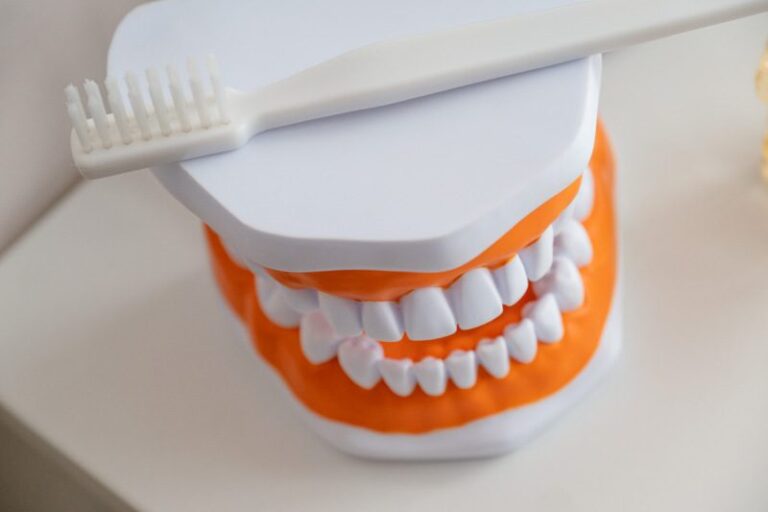
Proper care and hygiene are essential to maintain healthy teeth and gums for life.
Since we know that dental plaque and tartar are major contributors to dental and gum diseases, we recommend visiting a dental hygienist once a year in addition to regular dental check-ups.
The dental hygienist provides advice on oral health care, offers individual recommendations for dental care at home, and teaches proper hygiene techniques. Dental hygienist services also include teeth whitening.
To book an appointment, please contact our customer service or submit a booking request via our website.
Myofunctional Therapy
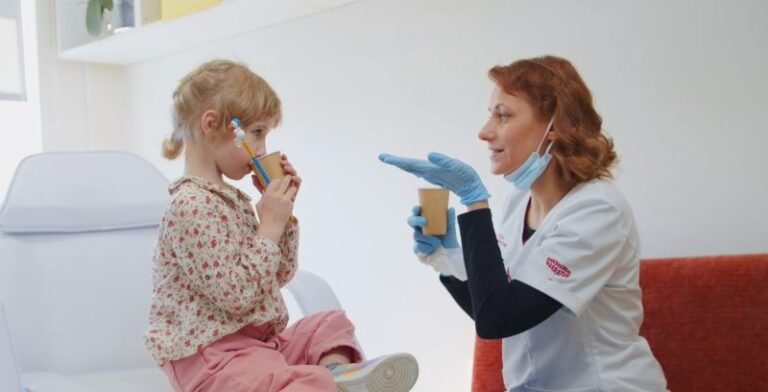
What is a myofunctional disorder?
The functions of the organs and muscles of the human maxillofacial system include sucking, swallowing, chewing, speaking, breathing and facial expressions. A myofunctional disorder manifests as incorrect position and dysfunction of the musculature of the face and mouth.
As a result of myofunctional disorders, dental anomalies, changes in facial skeletal growth and development, disturbed posture, oral hygiene problems, etc., can occur.
Treatment is carried out in cooperation with other specialists such as an orthodontist, otolaryngologist, sleep specialist, speech therapist, etc.
When to see a myofunctional therapist?
- Bad oral habits related to the mouth (long-term sucking on a finger, thumb, lip or cheek, nail biting, teeth grinding, prolonged use of a feeding bottle or pacifier)
- Breathing through the mouth/mixed breathing instead of breathing through the nose (open mouth, dry lips, tongue low and forward, short upper lip, dark circles around the eyes, elongated facial shape, difficulty concentrating)
- Grimacing during swallowing
- Increased salivation
- Pressing the tongue between the teeth or to the sides, when swallowing or speaking
- Mandibular joint disorders (pain, cracking noise)
- Breathing problems at night (obstructive sleep apnoea, snoring)
- Before and after lingual frenectomy
- After removal of adenoids/tonsils
What are the objectives of myofunctional therapy?
- Form the habit of breathing through the nose
- Achieve lip contact
- Correct the resting position of the tongue
- Correct the swallowing pattern
- Correct body posture
- Eliminate bad oral habits
How does myofunctional therapy work?
A myofunctional therapist prepares an individual treatment plan for the patient, which consists of treatment cycles. Each treatment cycle has its own goal and special exercise plan. During the appointment, it is explained to the patient why and what kind of exercises are necessary to address a specific problem. The therapist teaches, checks and, where necessary, corrects the exercises. For the treatment to be effective, it is crucial that the patient strictly follows the exercise plan at home.
Retraining bad habits is not easy, it requires good cooperation and willingness from both the child and the family.
Myofunctional treatment usually lasts from nine months to two years depending on the child’s age, concomitant treatment, the nature of the problem and the diagnosis.
Appointments usually take place 1–2 times a month and last from 30 minutes to an hour. The treatment plan is continuously adjusted according to the patient’s progress and the effectiveness of home exercises.
X-ray Service
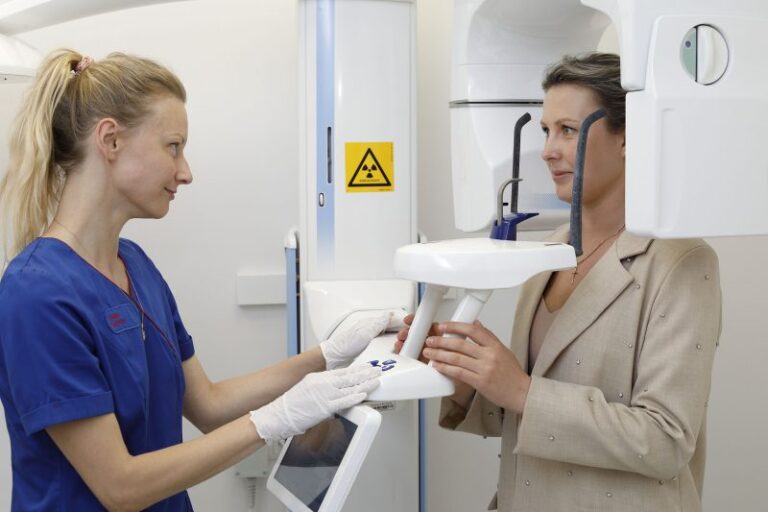
(break from 13.00 to 14.00).
A doctor's referral is required for taking an X-ray.
The X-ray room is open on weekdays (Mon–Fri) from 8.00 to 18.00 (break from 13.00 to 14.00).
We take digital X-ray images:
- Panoramic X-rays
- 3D imaging
- Small dental X-rays
- Lateral skull X-rays (cephalometry)
Our X-ray service can be used by all patients, including those referred from other polyclinics and dental offices
A doctor's referral is required for taking an X-ray.
THK röntgenuuringu saatekiri.docx (docx, 103kb)
Taking an X-ray image is quick, convenient and safe for the patient. Radiation doses from the X-ray machine are kept to a minimum. When performing the procedure, we comply with all the safety requirements.
Röntgenipildi tegemiseks ei pea eelnevalt aega broneerima. Teenuse saamiseks tuleb pöörduda meie klienditeenindusse, seejärel suunatakse patsient ootejärjekorda. Digipiltide tegemine käib kiiresti ja seetõttu liigub järjekord ruttu.
All ordered images are automatically sent to the Estonian Health Image Bank. If the doctor who requested the examination does not have access to the image bank, they must sign a corresponding agreement by writing to abi@pildipank.ee. Signing the agreement and viewing the images is free of charge. To make it convenient to view patient images in the Hammas or Dentes program, please contact the support of the respective program and inform them that the clinic has a valid agreement with the image bank.
If necessary, we also save the images on a USB drive, but the clinic cannot guarantee that the images will open on all devices due to specific program requirements.
X-ray rooms are accessible for wheelchair users. In general, accompanying persons are not allowed inside the X-ray room.
More information about X-ray services can be found under the section "For Colleagues".
Emergency Appointment
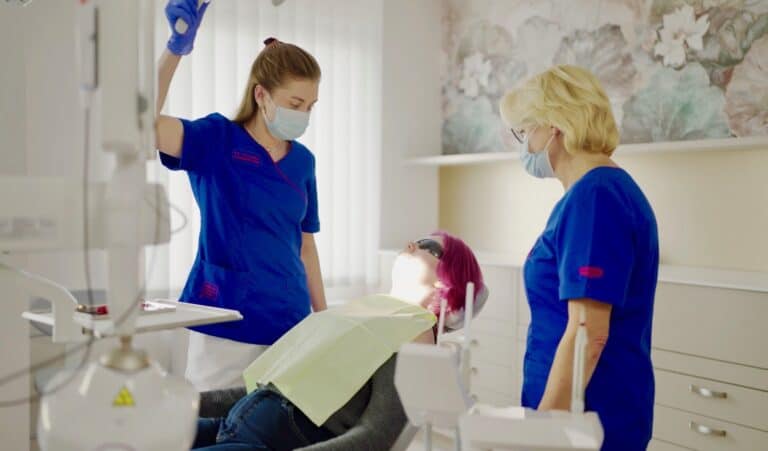
For assistance, please book an appointment for emergency care by calling 612 1200. Appointment booking starts on weekdays at 7:45 AM. On weekends and public holidays, booking starts at 9:00 AM, and doctor consultations are available on Saturdays from 9:00 AM to 3:00 PM and Sundays from 9:00 AM to 2:00 PM.
Emergency care appointments on weekdays
For assistance with toothache or trauma, please book an appointment for emergency care by calling 612 1200.
The clinic provides emergency care for patients every weekday. Appointment booking starts on weekdays at 7:45 AM.
During a first aid visit, the dentist only performs essential and urgent treatment procedures to alleviate the patient’s pain and inflammation. The dentist always sees the patient at the earliest opportunity. We ask for your understanding if the waiting time is longer than expected.
If you don’t have toothache, make an appointment for a scheduled visit with the dentist.
Emergency care appointments on weekends and public holidays
To get help, please book an appointment.
Booking starts at 9:00 AM. You can book a dentist appointment on Saturdays from 9:00 AM to 3:00 PM and on Sundays from 9:00 AM to 2:00 PM.
We provide first aid only in case of toothache and trauma. Dentists perform necessary and urgent treatment procedures to relieve the patient’s pain and inflammation.
For dental traumas occurring outside of clinic hours, please go to the emergency department (ER) for assessment of the situation, potential repositioning of the tooth if necessary, and diagnosis of possible jaw fractures. Read more about dental traumas here..
The dentist sees patients who have registered. The dentist has the right to take breaks during the working day. The dentist always sees the patient at the earliest opportunity. We ask for your understanding if your waiting time is longer than expected
When coming to the appointment, please bring an ID with a photo.
Payment
Emergency dental care is a paid service. Patients must make a 50-euro prepayment at the reception before the appointment. The final invoice will be issued based on the dental services provided. Any outstanding amount must be paid at reception. If the total cost is less than 50 euros, the overpaid amount will be refunded to the patient.
The Health Insurance Fund pays for the dental care of insured persons under the age of 19.
For adult patients, the Health Insurance Fund only covers the emergency care.The dentist decides on the need for emergency care during the examination of the patient.
For any questions or concerns, please contact our customer service.
Üldnarkoosis hambaravi lastele
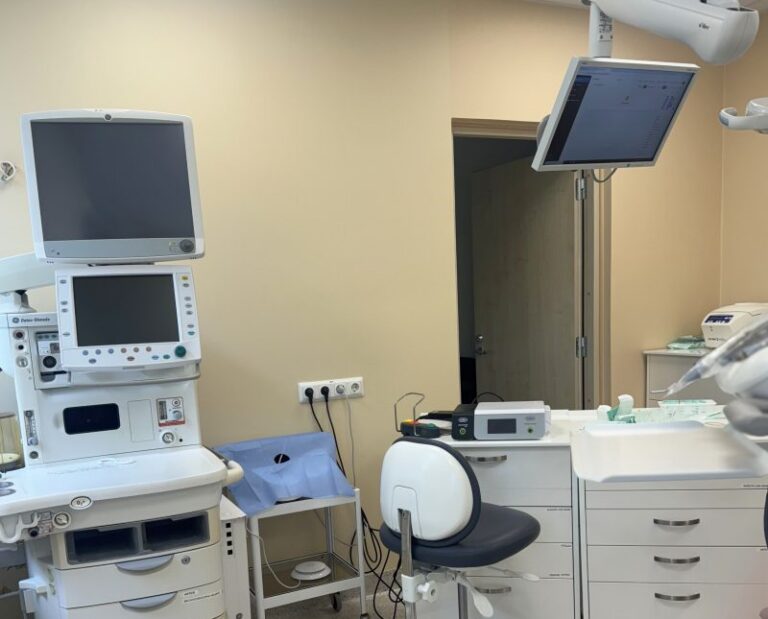
Teenuse eest tasub Tervisekassa; lisandub visiiditasu 5 eurot
Meie kliinik pakub alla 19-aastastele lastele hambaravi üldnarkoosis. Ravi on näidustatud juhtudel, kus laps ei ole võimeline tavapärast hambaravi taluma, kas tugeva hambaravihirmu, koostöövõime puudumise, ulatuslike hambakahjustuste või erivajaduste tõttu.
Ravi toimub ainult hambaarsti digitaalse saatekirja alusel. Registreerimine toimub telefoni või e-posti teel.
Protseduuri viivad läbi kogenud hambaarstid koostöös anestesioloogiga. Teenuse eest tasub Tervisekassa; lisandub visiiditasu 5 eurot.
Enne ravi on vajalik eelnev konsultatsioon nii ravi teostava hambaarsti kui ka anestesioloogiga. Narkoosiga hambaravi ei teostata, kui laps on haige (nt köha, nohu, palavik), on söönud või joonud vähem kui 6 tundi enne protseduuri
Pärast protseduuri viibib laps järelvalve all kuni täieliku ärkamiseni ning vanematele antakse põhjalikud juhised koduseks taastumiseks. Meie eesmärk on tagada lapsele turvaline ja stressivaba ravikogemus.
Lisainformatsiooni ja konsultatsiooni aja broneerimiseks palume võtta ühendust meie registratuuriga.
TÄHTIS INFO VANEMATELE
ÜLDNARKOOSIS HAMBARAVI EELTINGIMUSED
BRONEERIMINE
Kui patsient on järjekorras, kutsutakse ta konsultatsioonile arsti juurde, kes narkoosis hambaravi teostab. Võimalusel tehakse panoraamröntgen ja fotod suust, et hinnata hambaravi vajadus ning planeerida vajalikud ravitoimingud.
24-72 tundi enne protseduuri suhtleb anestesioloog lapsevanemaga, vanem allkirjastab nõusoleku narkoosiks.
KODUNE ETTEVALMISTUS PROTSEDUURIKS
- Laps peab olema terve viimase kahe nädala jooksul.
- Päev enne protseduuri: süüa-juua tavapäraselt.
Protseduuripäeva hommikul:
- EI TOHI süüa, närida närimiskummi ega juua,
sest üldnarkoosi ajal patsiendi neelamis- ja köharefleksid lakkavad toimimast. Kui maos on toitu või vedelikku, võib see sattuda hingamisteedesse, mille tulemusena võib tekkida kosupõletik, hingamisteede sulgus.
Isegi väike kogus maosisu (30–40 ml) võib põhjustada märkimisväärset kahju.
- Igapäevased ravimid anda vähese veega (v.a erijuhud – täpsustada raviarsti või anestesioloogiga).
MIDA PROTSEDUURILE KAASA VÕTTA
- Lapse isikut tõendav dokument.
- Saatekiri ja muud vajalikud dokumendid (nõusolek narkoosiks).
- Lapse lemmiklelu või raamat.
Lapsevanema roll: sisusta lapse ooteaeg, ole toeks, rahusta ja kaasa laps mängude või raamatutega.
NARKOOS JA HAMBARAVI PROTSEDUUR
Hambaravi teostamine üldnarkoosis lülitab välja patsiendi teadvuse ja valutundlikkuse kehas. Narkoosi viimise ja seejärel protseduuri ajal järelevalvet viib läbi anestesioloog koos anesteesiaõega jälgides pidevalt patsiendi seisundit.
NARKOOSIS HAMBARAVI EI TOIMU, KUI:
- Laps on haige (palavik, köha, nohu, äge nahalööve, kõhulahtisus).
- Laps on viimase 6 tunni jooksul söönud või joonud, sest see on ohtlik.
PÄRAST RAVI
- Laps viia koju võimalusel autoga.
- Füüsilist koormust vältida samal päeval.
- Laps ei tohi jääda üksi.
- Vajadusel võib anda lapsele valuvaigistina paratsetamooli või ibuprofeeni.
- Lasteaeda või kooli võib minna juba järgmisel päeval, kui enesetunne lubab.
LOOBUMINE JA UUED AJAD
Kui laps haigestub või ei saa protseduurile tulla, teavita sellest esimesel võimalusel telefonil 6121200 või e-posti teel info@hambapol.ee .
Aegsasti loobumisest teavitades saame aja anda järgmisele patsiendile
